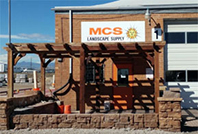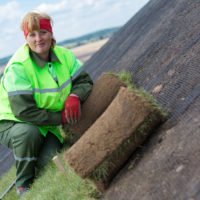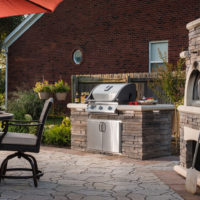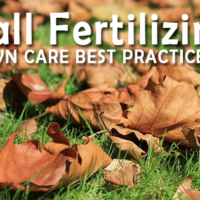Smart Planting Guidelines & Considerations for Water Efficient Landscapes
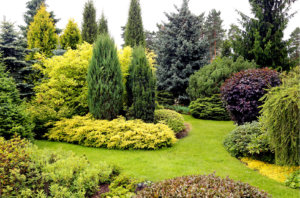 Plants, trees, and turf improve any landscape by providing a variety of textures, forms, sights, and smells. Because they can provide several environmental benefits, like improved air quality, food, and shade, plants are an essential component to any landscape design or enhancement. A careful focus on water efficiency during the design process for plant installation will ensure success for both the project at hand and the sustainability of the landscape.
Plants, trees, and turf improve any landscape by providing a variety of textures, forms, sights, and smells. Because they can provide several environmental benefits, like improved air quality, food, and shade, plants are an essential component to any landscape design or enhancement. A careful focus on water efficiency during the design process for plant installation will ensure success for both the project at hand and the sustainability of the landscape.
Often we associate water conservation with making aesthetic sacrifices to a landscape, but this is simply not the case. Having beautiful plant and tree life doesn’t have to mean using a lot of water or spending a lot of money! Creating water-efficient landscapes is the easiest way to guarantee beautiful, healthy, and natural-looking environments. Wise decision making in choosing the correct plant life, design, and maintenance routine for a water-efficient landscape will also reduce utility bills, help save the environment, and increase customer satisfaction and appreciation, hence getting you more work and referrals.
The following guidelines are some easy-to-follow water-efficient principles for plant and tree selection, installation, and maintenance that will help you be successful.
Installation Considerations
Plant, Tree, & Grass Selection
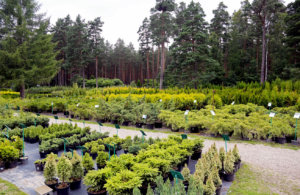 Perhaps the most important decision in any design/install is choosing the plant material that is best suited for the particular landscape. Here we must look for native, regionally appropriate, low water-using plants and trees. Species native to the landscape’s natural environment will be well suited to local conditions. Thus, native species will not require any excessive amounts of additional water or fertilizer and are much less prone to attracting invasive species. Luckily, native/adapted plants are currently a top-rated, expected consumer demand. According to the American Society of Landscape Architects, 82% of consumers demand native/adapted plants.
Perhaps the most important decision in any design/install is choosing the plant material that is best suited for the particular landscape. Here we must look for native, regionally appropriate, low water-using plants and trees. Species native to the landscape’s natural environment will be well suited to local conditions. Thus, native species will not require any excessive amounts of additional water or fertilizer and are much less prone to attracting invasive species. Luckily, native/adapted plants are currently a top-rated, expected consumer demand. According to the American Society of Landscape Architects, 82% of consumers demand native/adapted plants.
Be careful here…Not all soil conditions are the same, and just because a species is native to a relative area doesn’t mean it will have success in your specific soil scenario. Be sure to have your soil tested! Very sandy soil, heavy clay, compacted soil, or extreme soil pH may impact which plants are right for the specific landscape.
Consider Site Characteristics & Design Accordingly
Take careful considerations of a site’s exposure to the elements and choose plants that will thrive in the site’s conditions. Landscape site characteristics such as sun and shade, dry and damp areas, and plant size must be considered during design. Be aware that areas of the same site may vary significantly in soil type or exposure to sun and wind, as well as evaporation rates and moisture levels. Placing plants that prefer shade in open sun will affect their ability to thrive. Often times a site’s layout may need to be altered to create an ideal environment for planting. For example, you might plant shade trees to create natural “air-conditioning,” lowering air and soil temperatures and reducing soil moisture loss.
Group Plants According to Their Water Needs
 Often referred to as “hydro-zoning,” grouping vegetation with similar watering needs into specific “hydrozones” reduces water use and protects the plants from both underwatering and overwatering by allowing you to water to each zone’s specific needs. For example, turf areas and shrub areas should always be separated into different hydrozones because of their differing water needs. Trees and shrubs generally need deep watering less frequently while turfgrass needs more frequent watering. Once water needs of plants are identified, categories such as Routine Irrigation, Reduced Irrigation, Limited Irrigation and No Irrigation can be created. Label these zones with specific water requirements such as Routine Irrigation needs watering every 2-4 days and Limited Irrigation needs watering only during dry spells once plants are established.
Often referred to as “hydro-zoning,” grouping vegetation with similar watering needs into specific “hydrozones” reduces water use and protects the plants from both underwatering and overwatering by allowing you to water to each zone’s specific needs. For example, turf areas and shrub areas should always be separated into different hydrozones because of their differing water needs. Trees and shrubs generally need deep watering less frequently while turfgrass needs more frequent watering. Once water needs of plants are identified, categories such as Routine Irrigation, Reduced Irrigation, Limited Irrigation and No Irrigation can be created. Label these zones with specific water requirements such as Routine Irrigation needs watering every 2-4 days and Limited Irrigation needs watering only during dry spells once plants are established.
Maintenance Considerations
Effective Turf Management
Aerate Your Soil
Soil becomes compacted over time. Aerating your soil with a simple lawn aerator can increase the infiltration of water into the ground. Aeration will also improve water flow to the plant’s root zone, allow roots to grow more deeply, and reduce water runoff producing a stronger, more vigorous lawn.
Leave Grass Clippings
Leave the grass clippings on your lawn after you mow sometimes. The clippings quickly decompose and release valuable nutrients back into the soil to feed the grass, reducing the need for nitrogen or excess water.
Raise Your Lawn Mower Cutting Height.
Often times, especially in the summer, mowing too close to the ground will promote thirsty new growth. Longer grass promotes deeper root growth and a more drought resistant lawn. Longer grass blades also help shade each other, reducing evaporation, and minimizing weed growth. The optimal turfgrass height is the tallest allowable height within the recommended mowing range for the turf species grown.
Effective Plant Management
 Mulch Well Around Plants, Bushes & Trees
Mulch Well Around Plants, Bushes & Trees
Mulch 2″ – 4″ around plants and trees to reduce water evaporation, regulate soil temperatures, and maintain soil moisture. Mulch will also improve water penetration and help control weeds that compete for water. Mulch will also break down and provide valuable organic matter that will benefit plants and trees.
Go Easy on the Fertilizer
Fertilizer encourages thirsty new growth, causing your landscape to require additional water. Minimize or eliminate the use of fertilizer where possible. If you do need fertilizer, look for a product that contains “natural organic” or “slow-release” ingredients. These fertilizers feed plants slowly and evenly, helping to create healthier plants with strong root systems and no excessive “top growth”. Moreover, using “slow-release” fertilizers can reduce nutrient run-off into ground and surface waters, protecting natural resources.
Maintain Healthy Soils
Healthy soils are the basis for a water-smart landscape: they effectively cycle nutrients, minimize runoff, retain water, and absorb excess nutrients, sediments, and pollutants. Replace mulch around shrubs and garden plants at least once per year, and remove weeds and thatch as necessary.
Once you have analyzed your landscape site and developed a solid plan according to the site’s specific needs and water-efficiency you are ready to go! Taking the time to consider site sustainability and educating your customers will deeply benefit your business and the success of your designs and installs. Paired with a well-designed and installed smart irrigation system, your next job will be perfectly optimized for water efficiency and sustainability. Remember that there is no cookie-cutter approach to designing a space for smart irrigation, so let the site requirements determine the best solution and design accordingly.
To learn more about irrigation installation tips or to explore other industry resources visit our Knowledge Center. If you are an irrigation professional in the Colorado or Wyoming area and would like to partner with CPS distributors to help your business grow, visit our Become A Customer page.


